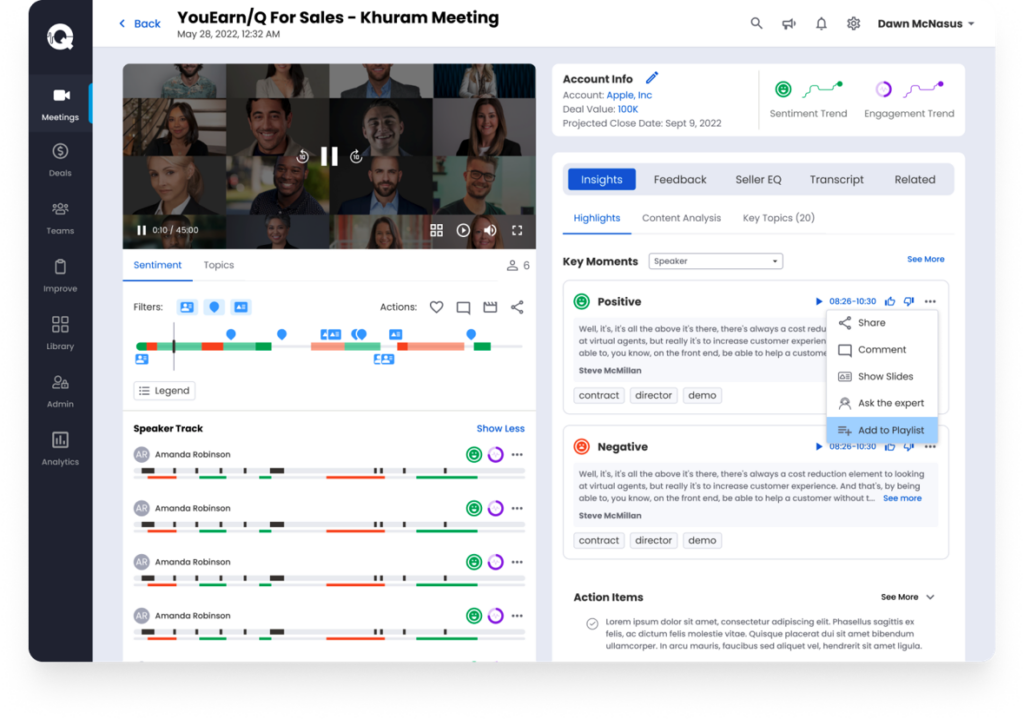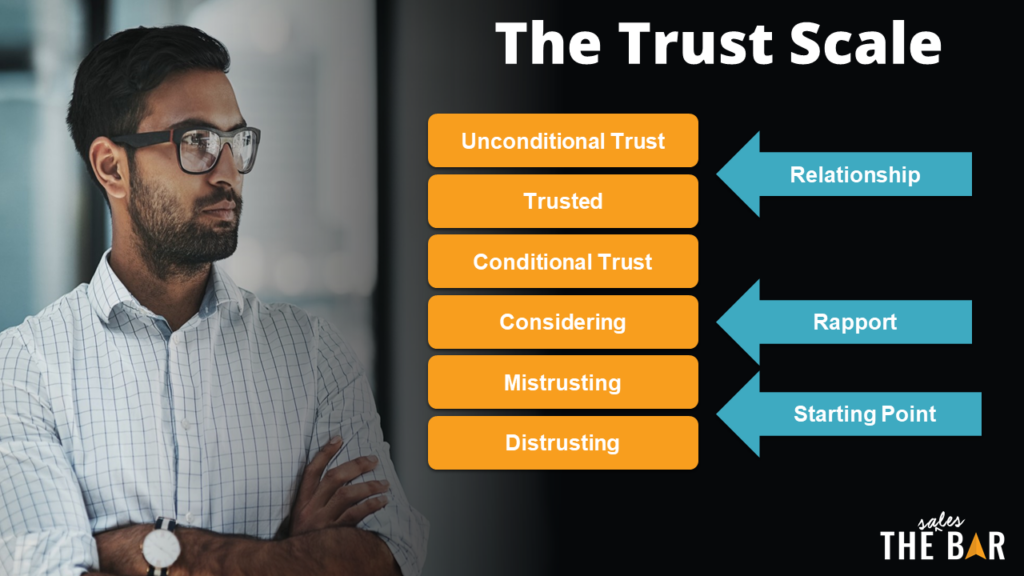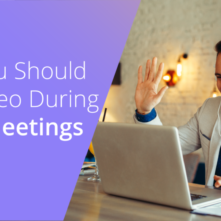How to Overcome Brush-Offs (and Get Prospects Talking)
Let’s face it, every seller has been brushed off (and probably quite often).
“I’m not interested.”
“We’re all set.”
“I don’t have time right now.”
Sound familiar? If you’re making outbound sales calls, cold or warm, you’ve heard these before. But here’s the good news: Brush-offs are not objections. And when you know how to handle them, you can double your talk time, increase your conversion rates, and book more meetings.
I’ve broken down my 6 tips and tactics to help you beat the brush-off and turn dismissals into meaningful conversations. Let’s dive in!
Brush-Offs Are NOT Objections
Objections happen late in the sales cycle after you’ve made your pitch and the buyer has concerns, usually about price, timing, or fit. Brush-offs? They happen early, and they’re not objections at all.
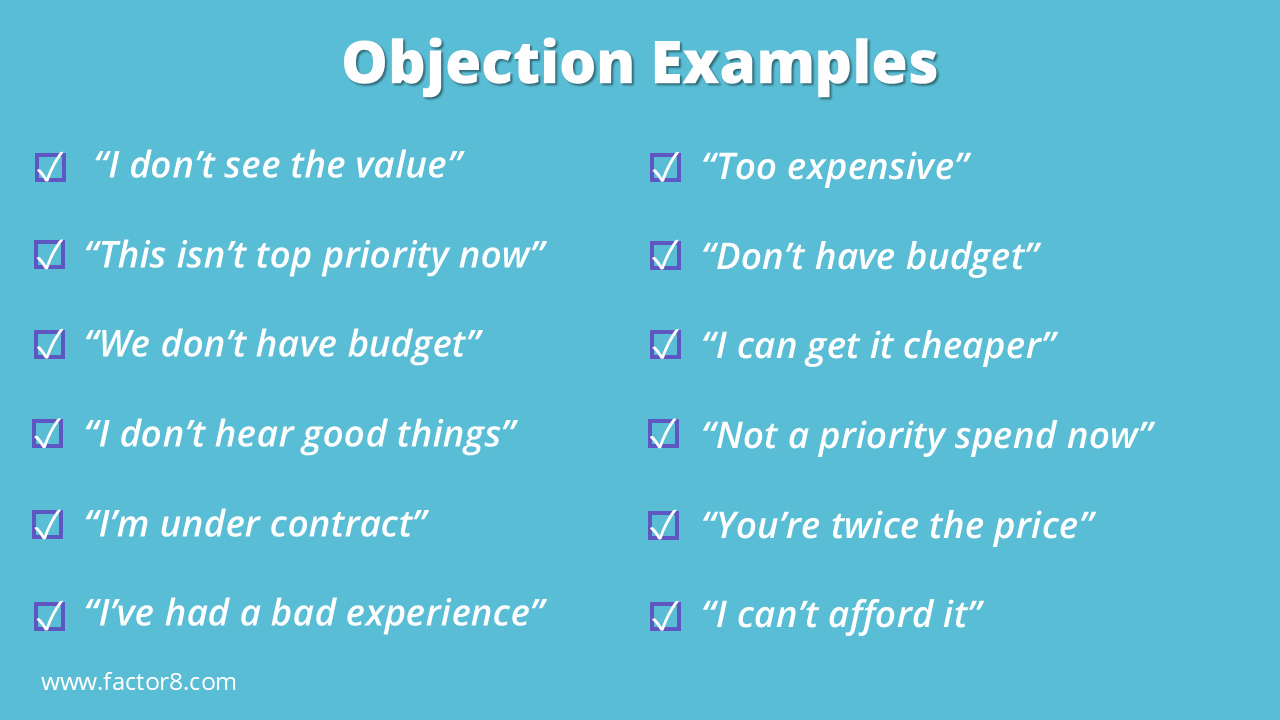
Think of a brush-off like an automatic reflex. It’s the prospect’s way of saying, “I don’t have time for a sales pitch right now.” That’s all it is. And it doesn’t mean they aren’t a good fit or won’t buy from you later. It just means they don’t know you… yet.
So, what’s your job? Keep the conversation going, show them you’re different, and provide value ASAP.
READ: How to Keep Prospects on the Phone
Brush-Offs Are Uninformed (That’s Good News!)
Prospects brush you off because they don’t know who you are or what you’re selling. That’s great news! It means they haven’t actually rejected you, they just haven’t heard your value yet.
This is why you should never “kill” a lead based on a brush-off. Too many sellers give up too quickly, assuming the lead is a dead end. In reality, the prospect just isn’t paying attention.
Here’s why you shouldn’t take brush-offs personally:
- They’re often automatic responses, not actual decisions
- The prospect is likely multitasking or distracted
- They don’t remember you yet (if you call back, you get another chance)
Your instinct might be to respond to the brush-off directly (“Oh, but we can save you 20%!”). DON’T DO THAT. That just gets you lumped in with every other pushy salesperson. Instead, sidestep it. Keep the conversation going by staying confident and trying again.
- If it’s a high-value lead, try them at least 10 times before moving on. They won’t even remember they brushed you off the first time.
- Call back quickly. If someone brushes you off today, try them again tomorrow. They probably won’t remember the first attempt, and this time, they may actually listen.
- Don’t answer the brush-off directly. Beat it instead. Instead of reacting to “I’m not interested,” keep control of the conversation and guide it where you want it to go.
By understanding that brush-offs are uninformed and automatic, you can push past them and start real conversations.
The REAL “Objection” Behind the Brush-Off
When someone brushes you off, what are they really saying?
- I’m busy.
- I don’t like sales calls.
- I don’t know who you are yet.
- I assume you’re like every other seller who’s going to pitch me something useless.
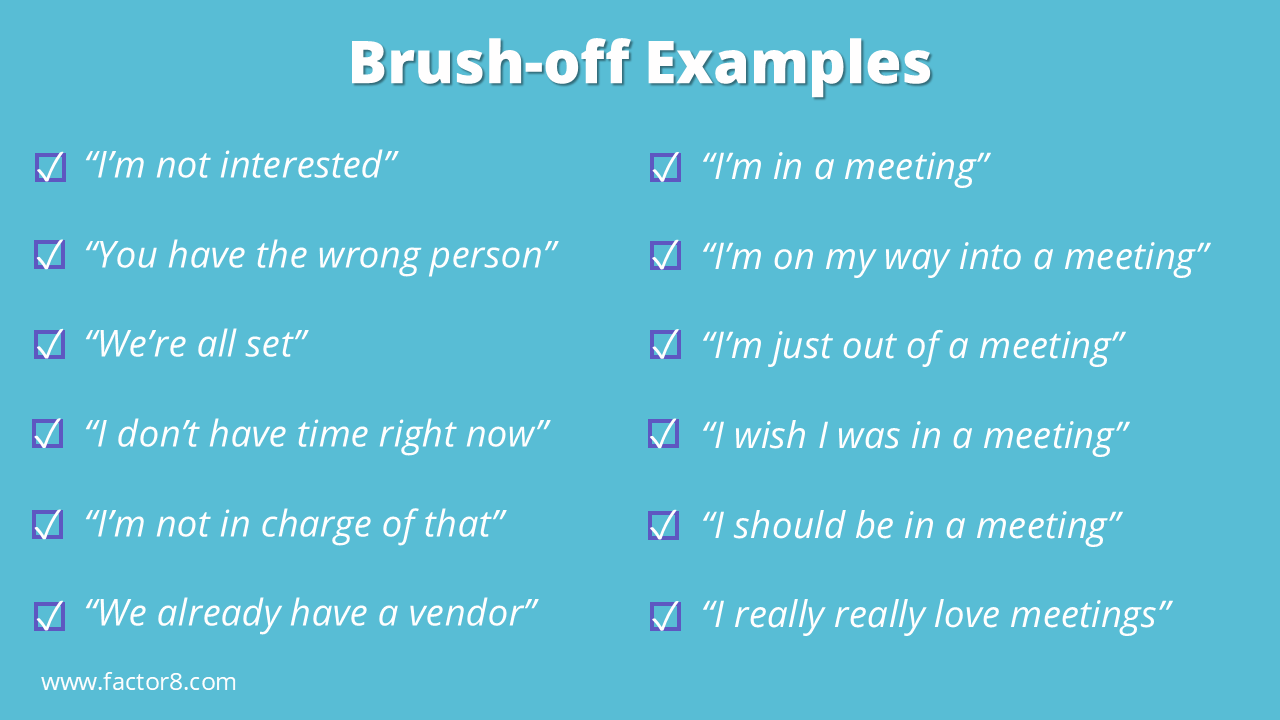
The key to overcoming a brush-off is understanding what’s underneath it. Most brush-offs aren’t real objections, they’re reactions to an interruption. Your prospect isn’t rejecting your solution; they’re rejecting the idea of being sold to in that moment. Your job is to shift their perception of you.
Here’s how to uncover the real meaning behind their response:
- Listen for patterns. Is their response rushed? Dismissive? A sign they don’t trust salespeople? Recognizing their tone helps you respond appropriately.
- Acknowledge and reframe. Instead of pushing back, show you understand: “I hear you. Sounds like you’ve got a lot going on right now.” This lowers their defenses.
- Use curiosity to break through. Ask a question that shifts their attention, like: “Would you say Q4 is your busiest quarter?” or “Out of curiosity, is this something you handle directly, or does someone else manage it?” When they engage, they’re opening the door for a real conversation.
The goal isn’t to argue with their brush-off, it’s to help them rethink it.
WATCH: How To Overcome Brush-Offs On Sales Calls
Get Them Talking (It’s Like Buying a Drink!)
If you’ve ever bought someone a drink at a bar, you know the goal isn’t to “close the deal” in 30 seconds. It’s to start a conversation. The same applies here.
When a prospect gives you a brush-off, they aren’t thinking deeply about your offer, they’re reacting instinctively. Your job is to interrupt that instinctive response and guide them into an actual conversation.
The best way to do that? Use the CCO Framework (Closed, Closed, Open) to break through their initial resistance. Start with simple, closed questions to get them talking, like “Is this a crazy time of year for you?” or “Would you say Q4 is typically your busiest quarter?” Once they’re engaged, move to an open question that invites more thought, like “Is this for a short sales cycle, or do deals take months to close?” By following this structure, you can take control of the conversation and steer it toward a meaningful discussion.
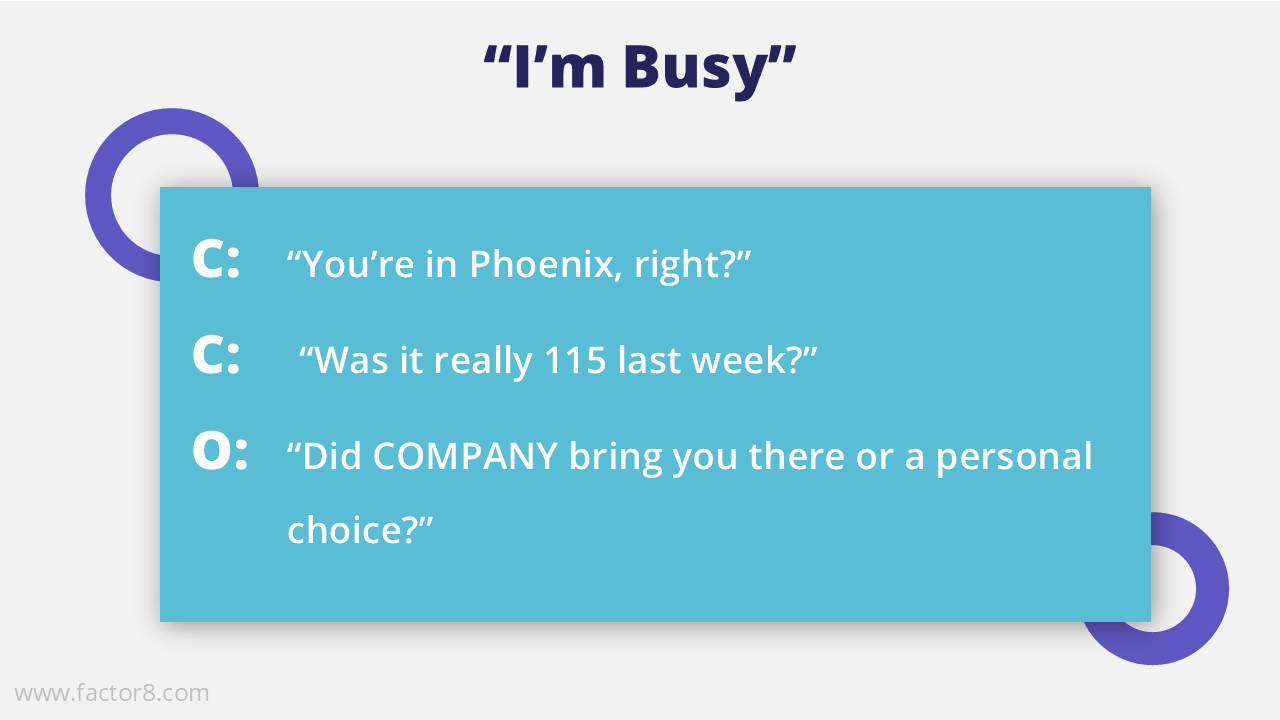
As a reminder, a brush-off is different from an objection. An objection is a real, considered response to your pitch, something they’ve thought about and have a concern over, like pricing, timing, or relevance. A brush-off, on the other hand, is a knee-jerk reaction designed to end the conversation before it even starts. Your job isn’t to overcome an objection here, it’s to keep them talking long enough to break their automatic dismissal.
DOWNLOAD: 4-Step Process to Overcome Objections
Shaking up the conversation with a pattern interrupt gets them to stop and engage. Small talk about something unexpected (like their location, the weather, or a recent event) can lower their defenses and make them more receptive. People also love talking about themselves, so guiding them toward a topic related to their role or priorities can naturally steer the conversation toward business without feeling forced.
Breaking Through Brush-Offs
Once you start recognizing brush-offs for what they really are—automatic, uninformed reactions—you’ll realize they’re not personal and they’re not final. The key to overcoming them is choosing the right approach. You can take the direct path by breaking the ice with the CCO Framework (Closed, Closed, Open), easing your way into the conversation until the prospect naturally engages. Or you can sidestep the brush-off completely by shifting the conversation to something unexpected, like their location, the weather, or a relatable topic, disrupting their auto-response and creating an opening for dialogue.
Either way, the goal is to bypass their defenses and turn a brush-off into a real sales conversation. Try it out, test both methods, and see what works best.






